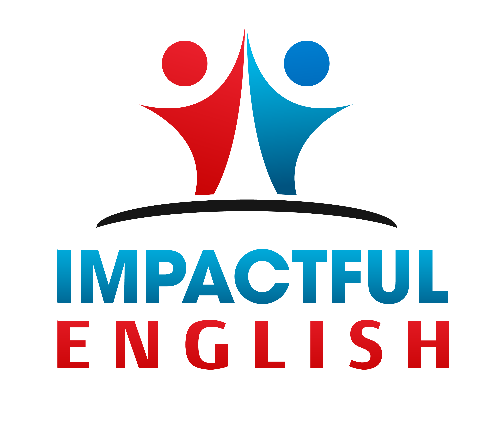How to Master English Fluency as a Non-Native Leader
After 10 years of running a language school focused on in-company training and 20+ years of one-to-one coaching, I’ve noticed a pattern. Many managers and leaders rely on methods that slow down their English progress.
Today, I’ll break down the approach I use that has enabled hundreds of non-native professionals to fast-track their fluency, communicate with confidence and influence people in the workplace.
Letting Go of the Academic Mindset
One of the biggest obstacles I believe non-natives need to overcome is letting go of the academic side of English. Let me explain.
If you’re a non-native English speaker, most of your learning experience has likely been in an academic setting. It started in school, continued in traditional language courses with textbooks, and focused heavily on grammar and tests to move up levels.
An academic approach helps in the early stages, but at the intermediate level and beyond, shifting to a real-world, ‘communicative’ mindset is essential in a professional context. Instead of viewing English as something to be tested on, you must start seeing it as a tool to connect, add value, and influence others.
The academic mindset causes you to fear making mistakes and worry about the judgement of others. This can make your English communication less fluid when you need to express your ideas. Whereas a communicative mindset encourages you to speak more freely, build confidence and become a more confident speaker.
Becoming truly confident in English involves developing the right mindset, mastering key communication skills, and actively building your vocabulary.
To illustrate how I help non-native leaders adopt a communicative mindset, I want to show you how I’ve structured my coaching approach around three main pillars. These are:
1. Shifting Mindset
2. Mastering Key Communication Skills
3. Expanding Vocabulary
Let’s explore each one in more detail.

1. Shifting Mindset
Speaking English at work is a combination of language proficiency and the right mental approach.
If a new client is facing English confidence challenges, I will work on their mindset at the outset of our coaching journey.
Our mindset defines how we view life, handle abilities, face challenges, and grow. Your mindset determines whether you succeed or fail, which is why top performers and athletes prioritize it.
Common mindset challenges for non-native speakers include fear of mistakes, fear of judgment, perfectionism, anxiety, risk aversion, comparison with others, and reluctance to step out of their comfort zone.
My life coaching skills have been key in helping clients overcome these challenges and build lasting confidence. This is because we get to the root cause of the issue, build self-awareness, and take small, doable action steps to create change.
Real transformation happens through action, and as a coach, I provide the support needed to help people take that first step and embrace new behaviours.
2. Mastering Key Communication Skills
The second key aspect of my personalized, one-on-one approach is identifying the specific communication challenges my clients face in their work environment.
These challenges vary from person to person, but some common difficulties include:
1. Structuring and articulating ideas in a clear, professional manner.
2. Capturing and influencing the audience’s attention during presentations.
3. Speaking with confidence and clarity in spontaneous situations, such as meetings.
To help clients develop fluency, I provide opportunities for them to practice expressing their ideas on engaging and relevant topics.
I also approach this through structured rehearsals (for presentations and meetings), personalized feedback, and targeted communication techniques.
I tailor each session to be most effective by concentrating on how the client actually uses English in their work. The process starts with a discovery session where I ask targeted questions to understand the client’s challenges. We then establish a timeframe for their goals, and I design a personalized English improvement plan. You can book your free Discovery session here.
3. Expanding Vocabulary
Building on mindset and targeted communication skills, the third pillar of my approach is dedicated to expanding vocabulary.
After studying some of the world’s most effective communicators, I’ve noticed a commonality. They all prioritize continuous vocabulary growth. And these are native speakers. So, for non-native professionals, having a structured vocabulary-building strategy is not just beneficial, it’s essential.
Despite understanding the importance of expanding their vocabulary, most non-native speakers lack an effective method for doing so. To address this, I guide my clients through a simple yet powerful five-step vocabulary-building strategy.
This approach is easy to implement, and with my guidance and accountability, it delivers excellent results. For example, one client was able to learn 600 words in just five weeks.
Conclusion
Mastering English as a non-native professional is about shifting your mindset, honing essential communication skills, and intentionally expanding your vocabulary. These three pillars work together to help you gain confidence and communicate with impact in your professional environment.
However, progress doesn’t happen by chance. It requires commitment, consistency, and the right strategy. When you approach learning with intention and take action you accelerate your growth and open doors to new career opportunities.
If you’re ready to take control of your English communication, it’s time to be proactive. Small, deliberate steps will lead to big transformations.
Let’s start this journey together. Book your free Discovery Session today.





